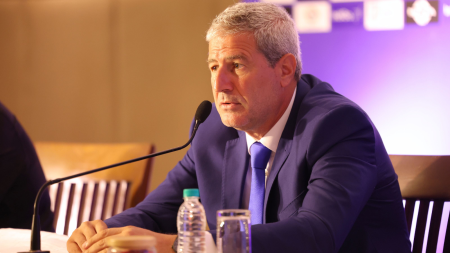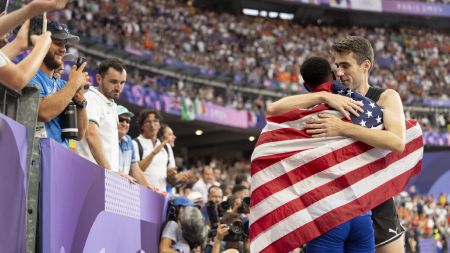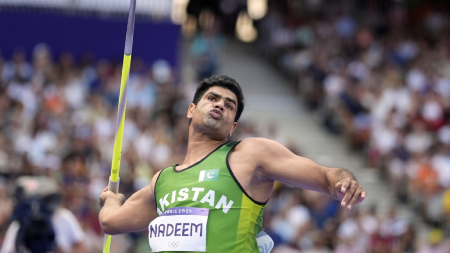Paris leaves India with a few smiles — and many red flags
Hiroaki Ota, a Japanese psychiatrist, called it “Paris Syndrome”. The state of being where tourists come to Paris with lofty hopes, expecting it to be a picture of perfection, but leave underwhelmed.
Three weeks ago, India’s athletes didn’t land on these shores as tourists. But they will still return with a lingering sense of disappointment.

The country’s Paris Olympics campaign ended with six medals — one silver and five bronze. There could be another, with an asterisk, as the Court of Arbitration for Sport is yet to pronounce its verdict in Vinesh Phogat’s plea for a silver. But there were also six agonising fourth-place finishes, more than ever, to mark the bitter-sweet campaign that ebbed as the Games progressed.
Every medal had a story. It elicited contrasting emotions but did one thing: raise the bar for India’s athletes.
In the warm and sunny city of Chateauroux, shooter Manu Bhaker showed it is possible to win not one but two medals in a single campaign. With some luck, it could have been an unprecedented hat-trick.
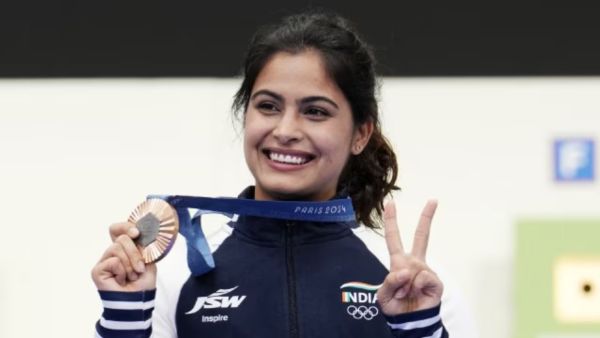 Manu Bhaker reacts after winning her second medal at the Paris Olympics (AP)
Manu Bhaker reacts after winning her second medal at the Paris Olympics (AP)
About 300 km away in Paris, Neeraj Chopra soared again and took India to newer territories: following up on the Tokyo gold with a silver here. But the country’s greatest living Olympian, at war with his own body, looked tormented that he couldn’t throw the javelin any longer.
The focus, however, will be on the lessons from each medal that was lost.
The first, coming from two of India’s biggest legends Prakash Padukone and Abhinav Bindra, was: spend, but wisely.
As The Indian Express reported before the Olympics, the Government spent Rs 72 crore under the Target Olympic Podium Scheme (TOPS) during the three-year Olympic cycle from Tokyo in Covid-hit 2021 to Paris.
That money was spent on customised training programmes, with the athletes getting almost everything they wanted — from a big entourage to specialised coaches to hi-tech equipment.
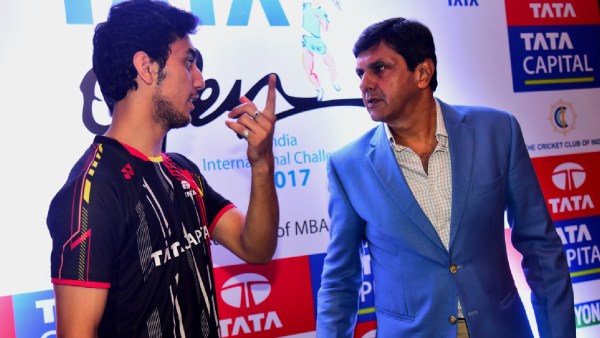 Prakash Padukone and Lakshya Sen at the Tata Open India International challenge at CCI, Mumbai in 2017. Express Photo by Kevin D’Souza.
Prakash Padukone and Lakshya Sen at the Tata Open India International challenge at CCI, Mumbai in 2017. Express Photo by Kevin D’Souza.
Last week, Padukone urged the Government — the biggest spender — and the federations to be a “little firm” with those who don’t deliver. He also demanded the players “cannot keep asking for more and more and more”.
On Saturday, Bindra, who has experienced the era when funds didn’t flow so smoothly, said the Olympics aren’t a “vending machine” and that the players “can’t be wrapped in cotton wool”.
“We need to understand that money is only going to be an enabler. Money is not going to get you medals,” Bindra told The Indian Express. “It is blood, sweat and tears, hard work and resilience shown on the field of play, which will get you there. And hunger is a very, very important aspect of it. Resources being allocated is only a simple, simple enabler, and you need it.”
A consensus is building that, at an elite level, the Government money and support is going to a sportsperson but not the sport. This was seen at the Paris Games, where in a few key sports, serious red flags have emerged.
Consider this:
🟥 In badminton, India returned empty-handed for the first time since the London Olympics. A bigger concern is the empty cupboard in women’s singles, especially since P V Sindhu — a medallist in the Rio and Tokyo Olympics — hinted that Los Angeles 2028 might be a Games too far for her.
🟥 In boxing, another sport that has fetched India medals consistently, there isn’t a serious male contender for the future. Nikhat Zareen, done in by the luck of the draw, remains the only bankable face on the women’s side.
🟥Mirabai Chanu made a painful exit in fourth place in her last Olympics. For Los Angeles 2028 and beyond, there isn’t a single new face India can turn to in the hope of continuing her legacy in weightlifting.
India’s participation at the Olympics is as it is restricted to a dozen out of the 30-plus sports. To fall behind in these key sports would impact participation numbers and at the same time, hurt medal chances.
They don’t need to look far for inspiration.
Shooting, despite back-to-back failures, remained resilient and drove India’s medal tally thanks to the patient, long-term planning by multiple agencies. The tweaking of firearm laws led to mass participation. That created a deep talent pool, which led to a highly competitive domestic structure that was reflected in the selection trials. Three medals, seven finals and three fourth-place finishes provide a solid base for future Games.
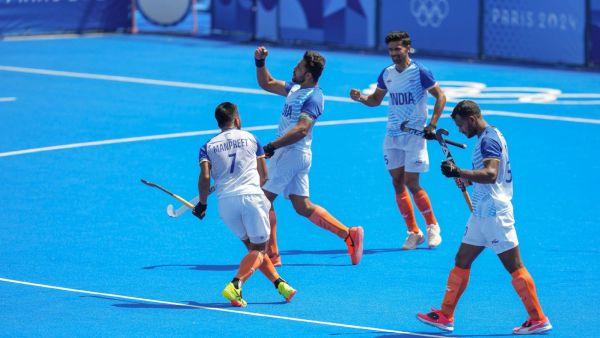 Paris: India’s captain Harmanpreet Singh celebrates with teammates after scoring a goal during the Pool B hockey match between India and Argentina at the 2024 Summer Olympics, in Paris, France, Monday, July 29, 2024. (PTI Photo/Ravi Choudhary)
Paris: India’s captain Harmanpreet Singh celebrates with teammates after scoring a goal during the Pool B hockey match between India and Argentina at the 2024 Summer Olympics, in Paris, France, Monday, July 29, 2024. (PTI Photo/Ravi Choudhary)
Hockey might have botched up the women’s team programme, unable to build on their Tokyo success. But they got the men’s team planning right. Be it, in hindsight, the timely intervention and changing of coaches after the World Cup debacle, empowering the foreign coach, Craig Fulton, and meeting his demands — or, be it a full-time travelling psychologist or a trip to the Alps days before the Olympics.
The free hand given to Fulton allowed him to test his plans without the fear of failure and, as a result, when India landed in Paris, they could look any team in the eye. This bronze medal, at a time when the competition level in men’s hockey is arguably at its highest, will be special.
If shooting is a lesson in broad-basing grassroots and hockey showed what can be achieved if a person with a plan is given full freedom, wrestling points to how crucial the cultural element is.
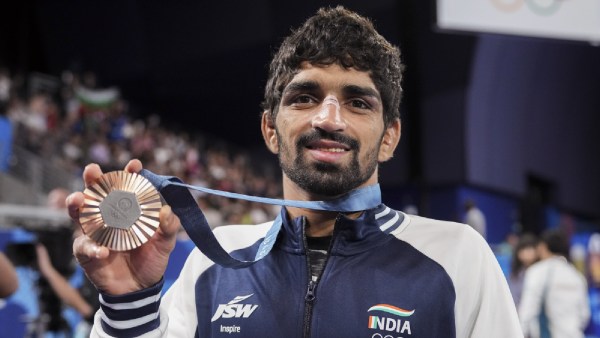 Bronze medalist India’s Aman Sehrawat poses for photos during the victory ceremony for the men’s 57kg free-style wrestling event at the 2024 Summer Olympics, in Paris, France. (PTI)
Bronze medalist India’s Aman Sehrawat poses for photos during the victory ceremony for the men’s 57kg free-style wrestling event at the 2024 Summer Olympics, in Paris, France. (PTI)
The financial assistance to India’s youngest Olympic medallist, 21-year-old Aman Sehrawat, was just Rs 16 lakh since December 2021, far less than most Indian athletes. He trains at Delhi’s Chhatrasal, a stadium that has found itself in one controversy and crime after another. His sport suffered brutally with national and international tournaments drying out after sexual harassment charges were levelled against the then federation chief Brij Bhushan Sharan Singh.
But Sehrawat was in an environment where the only thing he would breathe, eat and sleep was wrestling. And it was the ingenuity of his coaches and the deeply ingrained culture that keeps churning out champions that ensured wrestling’s streak of Olympic medals continued unabated.
Olympics 2024- Affable Neeraj, Angry Neeraj, Pragmatic Neeraj, Avenger Neeraj make a Champion Neeraj
- Fierce rivals, good friends and podium finish: The Neeraj-Arshad show has a 'big message' for India, Pakistan youth
- Paris Olympics: Vinesh Phogat denied on the cusp of ultimate glory, another entry in her diary of heartbreaks
These sports — and Chopra’s genius — made sure that even in a poor Olympics and with disappointments galore, India came close to the Tokyo tally of seven — one gold, two silver, four bronze. But the contingent still finished a lowly 71 overall, sandwiched between Lithuania and Moldova, and 23 slots below its standing in the Tokyo Games.
It’s not what the country expected before landing here. But then, the Paris Syndrome exists for a reason.
Disclaimer: The copyright of this article belongs to the original author. Reposting this article is solely for the purpose of information dissemination and does not constitute any investment advice. If there is any infringement, please contact us immediately. We will make corrections or deletions as necessary. Thank you.

